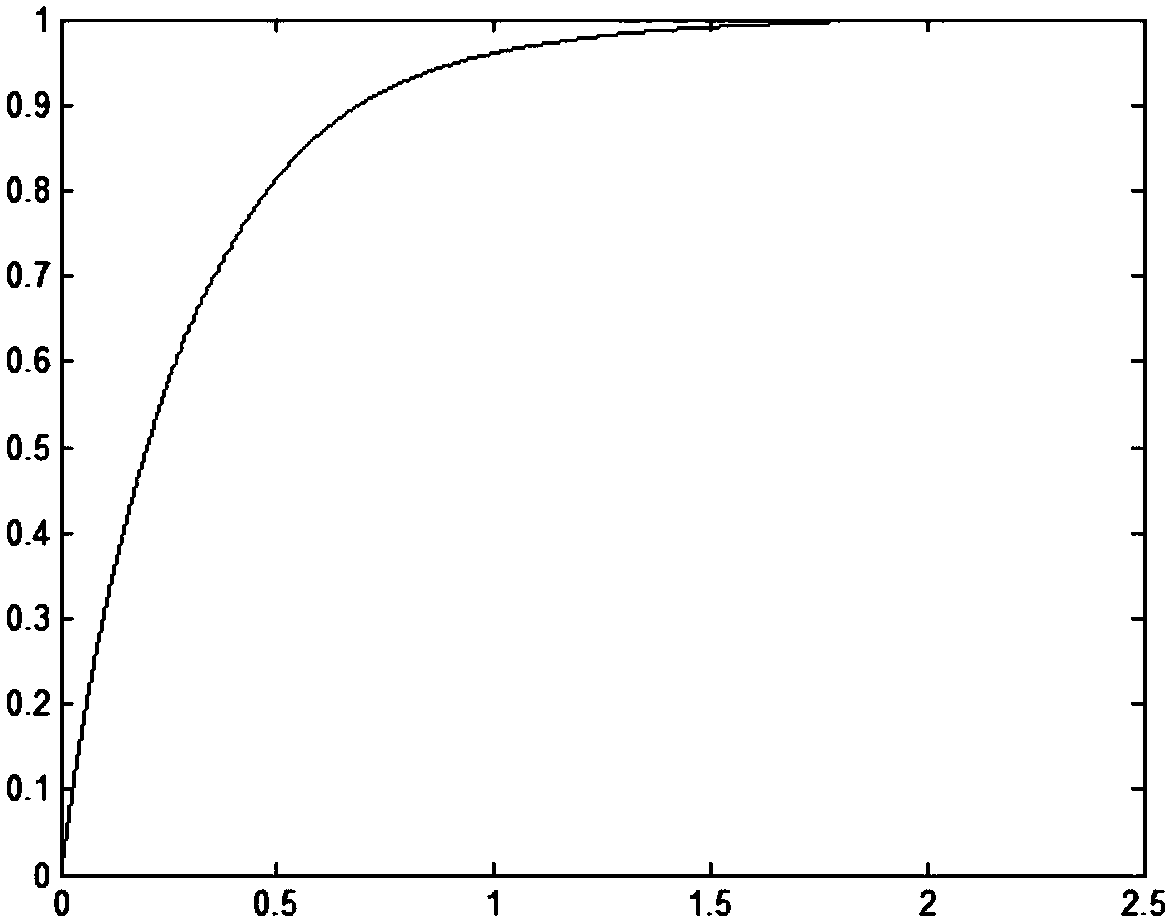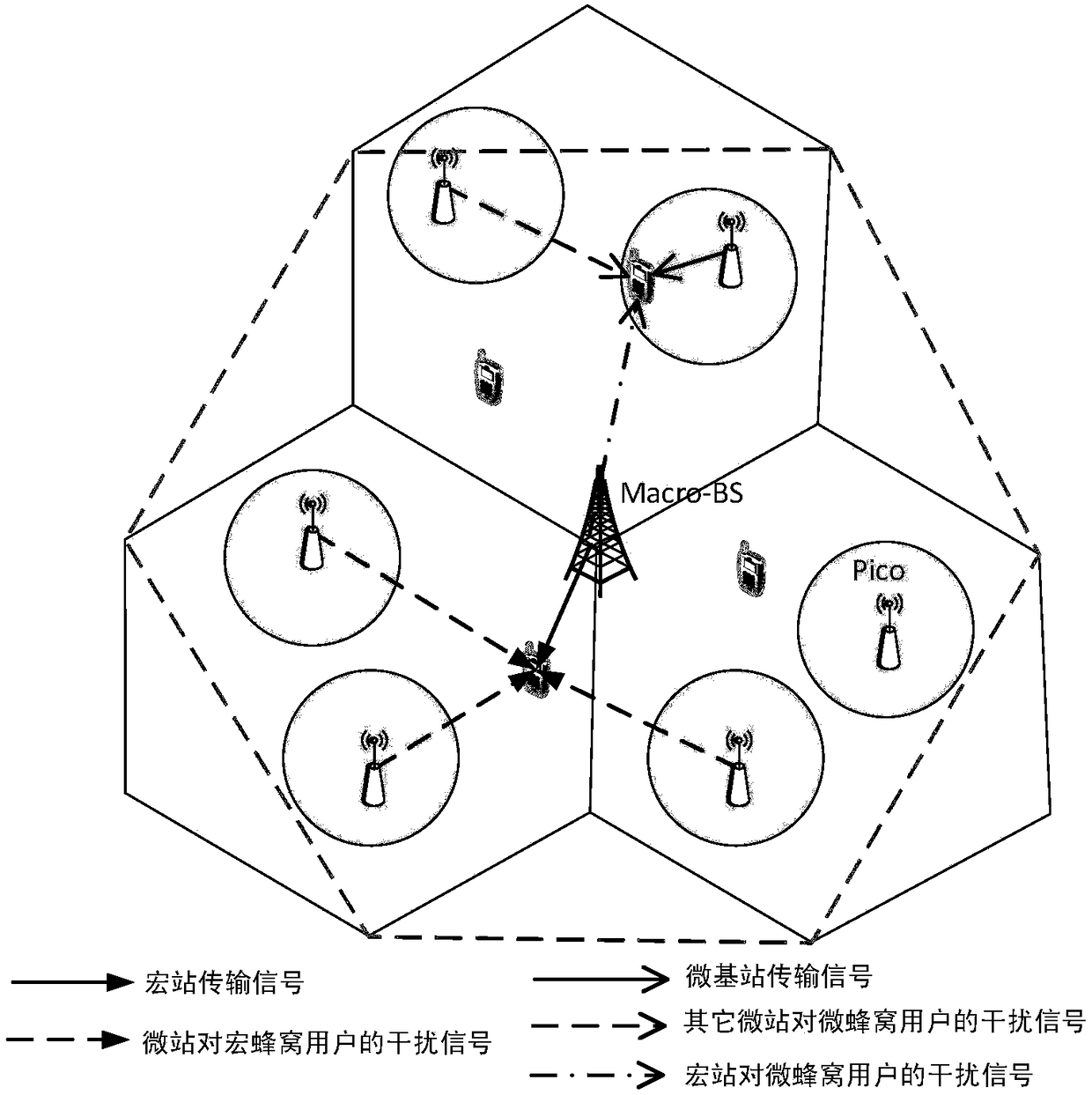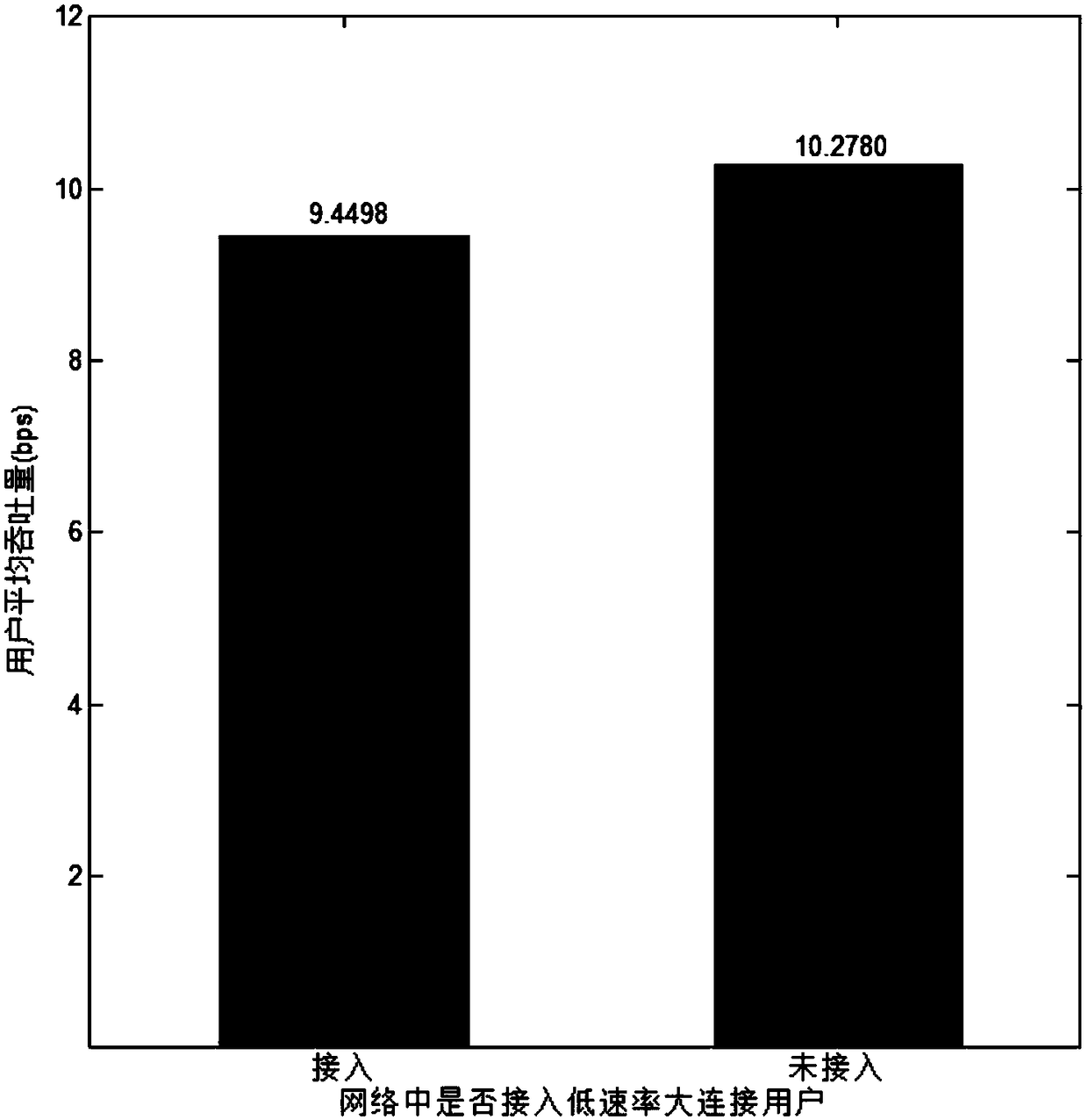Optimal User Scheduling Method Based on Minimum Effective Sinr in Low Power Consumption and Large Connection Scenarios
A technology of user scheduling and low power consumption, which is applied in the field of communication, can solve problems such as inability to allocate frequency resources, achieve rich diversity, optimize system performance, and ensure system throughput.
- Summary
- Abstract
- Description
- Claims
- Application Information
AI Technical Summary
Problems solved by technology
Method used
Image
Examples
Embodiment 1
[0057] The simulation scene adopts figure 2 The network structure shown is divided into 3 sectors on a traditional macro-cellular hexagonal network topology, and each sector randomly spreads two Pico base stations in a Poisson point distribution manner, and users in each sector Evenly distributed and the number of FullBuffer users is set to 10, and the number of low-speed large-connection users is set to 40. At the same time, it is assumed that the macro base station and the micro base station share the same frequency band resource, and when the base station closest to the user and the base station is a micro base station and is within the coverage of the micro base station, the service is provided by the micro base station; otherwise, the service is provided by the macro base station in the sector where the user is located. service, and the rest of the simulation parameters are shown in Table 1.
[0058] Table 1 Simulation parameter settings
[0059]
[0060] Depend on ...
Embodiment 2
[0062] Simulation parameters are the same as in embodiment 1, by Figure 4 It can be seen that the performance comparison between the method of allocating frequency resources for users with low power consumption and large connection and the method of randomly allocating frequency resources can be clearly seen from the figure. The performance of access probability of connected users is better than that of randomly allocating frequency resources. With our proposed scheme, on the one hand, it can reduce the frequency resources occupied by low-power and large-connection users as much as possible so that FullBuffer users occupy more frequency resources. In this way, higher throughput performance can be obtained. On the other hand, low-power consumption and large-connection users can be combined more effectively, and access probability performance can be obtained more efficiently.
PUM
 Login to View More
Login to View More Abstract
Description
Claims
Application Information
 Login to View More
Login to View More - R&D
- Intellectual Property
- Life Sciences
- Materials
- Tech Scout
- Unparalleled Data Quality
- Higher Quality Content
- 60% Fewer Hallucinations
Browse by: Latest US Patents, China's latest patents, Technical Efficacy Thesaurus, Application Domain, Technology Topic, Popular Technical Reports.
© 2025 PatSnap. All rights reserved.Legal|Privacy policy|Modern Slavery Act Transparency Statement|Sitemap|About US| Contact US: help@patsnap.com



